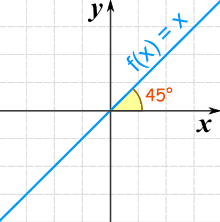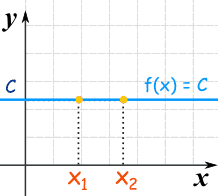Linear Equations
A linear equation is an equation for a straight line
Let us look more closely at one example:
Different Forms
There are many ways of writing linear equations, but they usually have constants (like "2" or "c") and must have simple variables (like "x" or "y").
But the variables (like "x" or "y") in Linear Equations do NOT have:
- Exponents (like the 2 in x2)
- Square roots, cube roots, etc
Slope-Intercept Form
The most common form is the slope-intercept equation of a straight line:

 | |
| Slope (or Gradient) | Y Intercept |
 | Play With It !You can see the effect of different values of m and b at Explore the Straight Line Graph |
Point-Slope Form
Another common one is the Point-Slope Form of the equation of a straight line:
y − y1 = m(x − x1)
|  |
General Form
And there is also the General Form of the equation of a straight line:
Ax + By + C = 0
|
| (A and B cannot both be 0) |
There are other, less common forms as well.
As a Function
| y = 2x − 3 |
| f(x) = 2x − 3 |
| These are the same! |
And functions are not always written using f(x):
| y = 2x − 3 |
| w(u) = 2u − 3 |
| h(z) = 2z − 3 |
| These are also the same! |
The Identity Function
There is a special linear function called the "Identity Function":
f(x) = x
And here is its graph:

It makes a 45° (its slope is 1)
It is called "Identity" because what comes out is identical to what goes in:
| In | Out |
|---|---|
| 0 | 0 |
| 5 | 5 |
| −2 | −2 |
| ...etc | ...etc |
Constant Functions
Another special type of linear function is the Constant Function ... it is a horizontal line:

f(x) = C
No matter what value of "x", f(x) is always equal to some constant value.



No comments:
Post a Comment